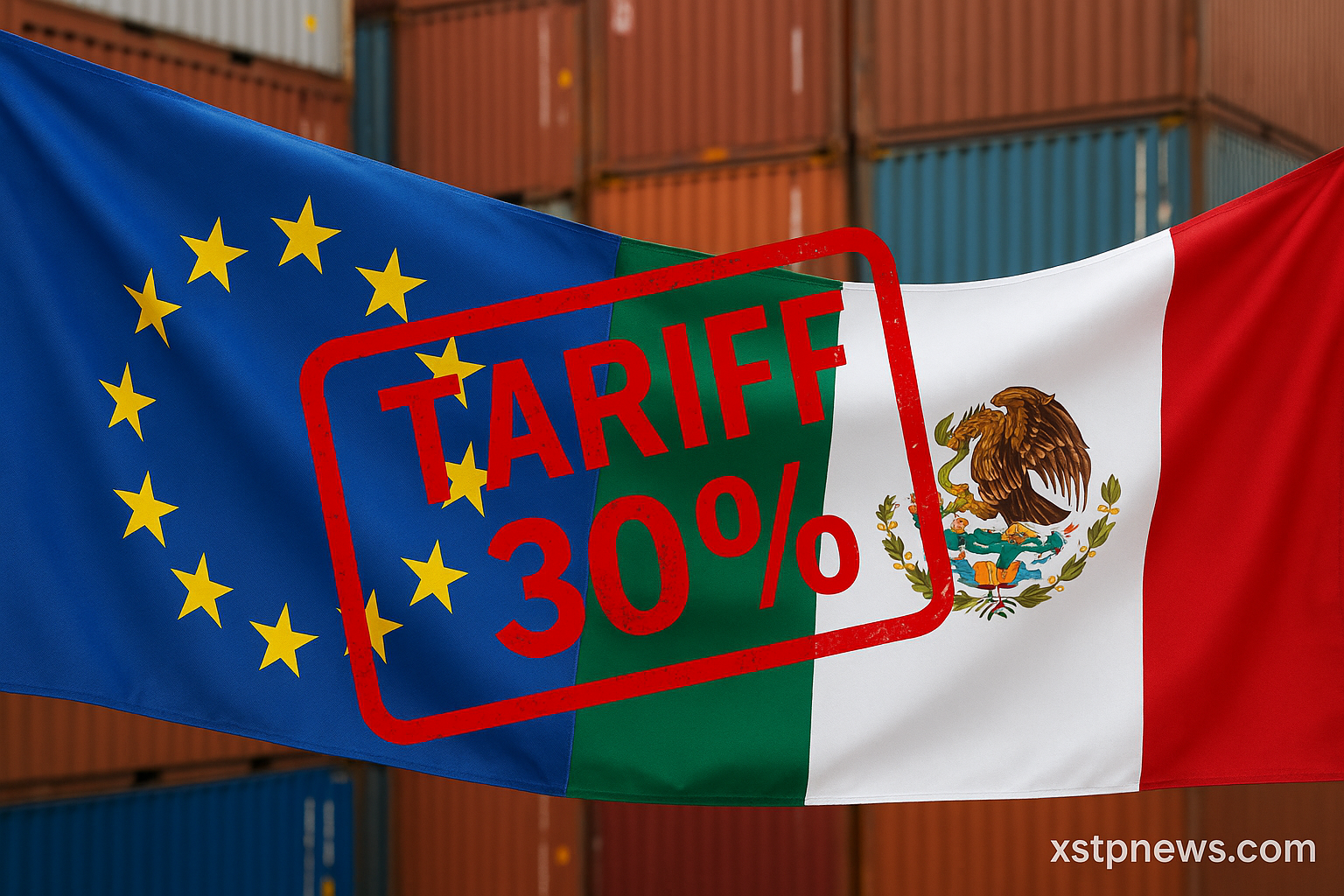The 30% tariff announced by President Donald Trump shakes global trade and threatens to disrupt billion-dollar flows between the United States, the European Union, and Mexico. The direct impact hits strategic sectors such as automotive, steel, and food, with cascading effects on consumers and investors.
Official announcement and reasons
President Donald Trump officially unveiled on Friday, July 12, a 30% tariff on goods imported from the European Union and Mexico, set to take effect on August 1. The decision was communicated through letters published on Truth Social, where he framed the move as essential to protect American industry and reduce trade deficits.
This expands on previous measures rolled out since April, when the U.S. began imposing tariffs ranging from 10% to 20% on other trading partners. With these 30% tariffs on two of America’s main trade allies, the Republican administration’s trade agenda enters a new, more aggressive phase.
Immediate reactions and most affected sectors
The European Union has already indicated potential retaliatory measures, preparing counter-tariffs targeting U.S. goods. In Mexico, the government convened emergency meetings with industry representatives to explore diplomatic responses and safeguard local exporters.
The most affected sectors include:
- Automotive, especially cars and auto parts from Germany, France, and Mexico.
- Steel and aluminum, crucial for construction and infrastructure.
- Food and beverages, notably European wines and Mexican fruits.
- Electronics and apparel, where global supply chains could face widespread price adjustments.
Major brands like Nike, Walmart, Ford, and Best Buy have warned that passing these higher costs on to consumers is almost unavoidable, heightening inflationary pressure in the U.S..
Market effects and projections
Although there were no sharp immediate drops in major stock indices, analysts believe the real impact will unfold through the second half of the year, with potential volatility across equities and currencies.
Experts also highlight the risk of a drawn-out trade war, which could hurt not only direct importers and exporters but ripple through global logistics networks. For everyday consumers, the most tangible effect will be higher prices on imported cars, appliances, and food products tied to these markets.
What to watch in the coming months?
Attention is now focused on three critical areas:
- Potential renegotiations or carve-outs before the August 1 start date.
- Formal announcements of retaliatory measures by the EU and Mexico.
- Corporate Q3 earnings reports that may begin to reflect rising costs.
Meanwhile, investors are keeping a close eye to spot opportunities or hidden risks emerging from this renewed protectionist phase.







